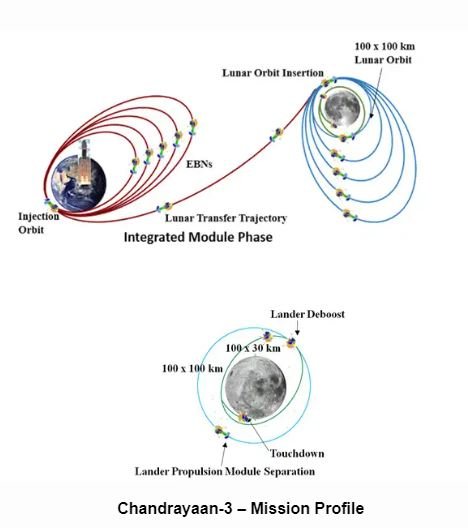Chandrayaan-3 consists of a native lander module (LM), a propulsion module (PM) and a rover to develop and demonstrate new technologies required for interplanetary missions. The lander will be able to make a soft landing at a specific spot on the moon and deploy a rover that will conduct a chemical analysis of the lunar surface as it travels. Lander and rover carry scientific payloads useful for conducting experiments on the lunar surface. The main function of PM
is to carry the LM from the launch vehicle injection to the last 100 km lunar orbit and to separate the LM from the PM. In addition, the propulsion module also has a science payload as an added value, which will be supported after the landing module is separated.The identified launch vehicle for Chandrayaan-3 is the LVM3 M4, which will place the integrated module in an approximately 170 x 36,500 km elliptical parking orbit (EPO).

Objective
1. To measure the near surface plasma (ions and electrons) density and its changes with time
2.To measure seismicity around the landing site and delineating the structure of the lunar crust and mantle.
3,To carry out the measurements of thermal properties of lunar surface near polar region.
4.It is a passive experiment to understand the dynamics of Moon system
5.Future discoveries of smaller planets in reflected light would allow us to probe into variety of Exo-planets which would qualify for habitability (or for presence of life).
6. To determine the elemental composition (Mg, Al, Si, K, Ca,Ti, Fe) of Lunar soil and rocks around the lunar landing site.
